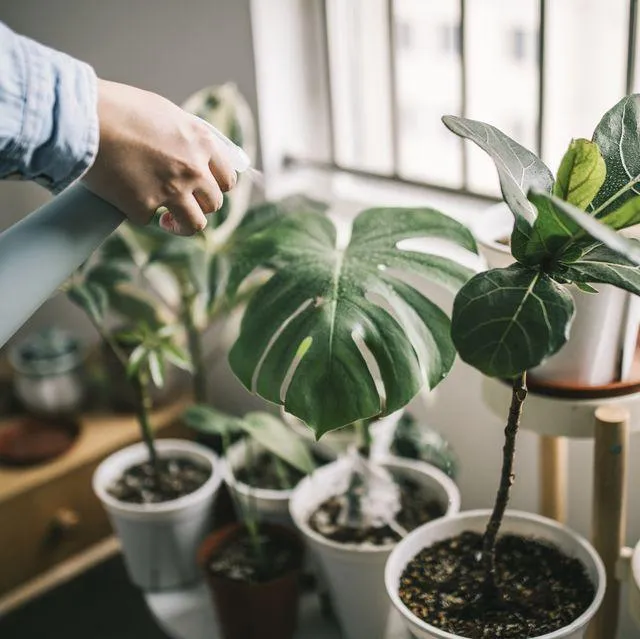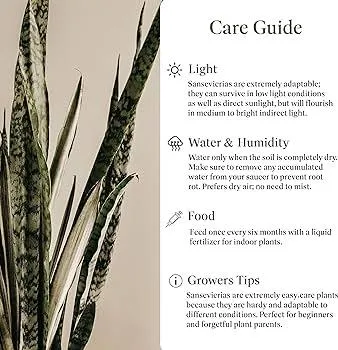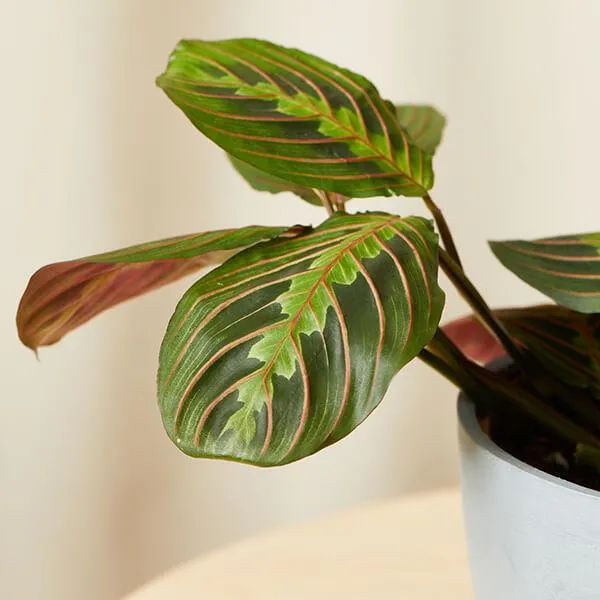Plants That Can Thrive Without Direct Sunlight
If you’re looking to add some greenery to your home but don’t get much natural light, don’t worry – there are several houseplant options that can do quite well even in low-light conditions. In this article, I’ll provide an overview of some of the best plants for low-light areas and give you tips to help them flourish without direct sunlight.
Spider Plants
Spider plants (Chlorophytum comosum) are one of the champion indoor plants that thrive in low light. With their long, flexible stems and narrow green leaves, they have an airy, delicate appearance. From my experience caring for spider plants over many years, I can say they are exceptionally tough and forgiving. They’ll grow happily in very dim indoor lighting near a north-facing window. Just be sure not to overwater them – their soil should be allowed to dry out slightly between waterings.
Pothos
Also known as devil’s ivy, pothos (Epipremnum aureum) is another common recommendation for low-light situations. They have heart-shaped leaves in various color patterns like green, yellow, or variegated. Pothos grow as trailing vines, so they work well hanging from a bookshelf or winding around a floor lamp. I’ve seen pothos survive for months in very dim lighting, perhaps getting a window glimpse just once a week. They’re practically impossible to kill!
Snake Plants
Snake plants (Sansevieria trifasciata) earn their reputation as one of the toughest indoor plants. Their stiff, upright leaves can give a statuesque look. Funnily enough, they’re occasionally called “mother-in-law’s tongue” because of their ability to withstand neglect! In my experience, snake plants can handle very low indirect light and infrequent watering. They’re happy with just enough moisture to prevent their soil from completely drying out. Their slow growth makes them low maintenance.
Chinese Evergreen
Chinese evergreen (Aglaonema species) comes in an amazing range of leaf colors and patterns like green with red veins or pink variegation. This plant grows compactly as a bush. I find Chinese evergreen a little pickier than the previous options when it comes to too low light levels. But it will do well in medium to low light near an east- or west-facing window. Be careful not to overwater – it prefers to dry out a bit between waterings. These plants can liven up a space with dazzling tropical foliage.

Peperomia
Peperomias come in hundreds of varieties with different leaf shapes. Some common types include peperomia polybotrya (“jade ripple”), peperomia caperata (“radiator plant”), and peperomia obtusifolia (baby rubber plant). In my experience caring for peperomias, they display amazing diversity while also appreciating low humidity and low-light conditions. They grow well in medium or low light and will even survive for months with just occasional bright window light. Their unusual foliage in shades of green, red, or white make peperomias an intriguing option.
Cast Iron Plant
As its name implies, cast iron plant (Aspidistra elatior) is remarkably tough and tolerant of neglect. They have broad, shiny leaves emerging from the base that can reach 2-3 feet tall. Although slow-growing, cast iron plants are patient houseplants. Basically anywhere with indirect natural light would suit them, even very dim environs. From what I’ve seen, cast iron plants can persist for years with just average care. Their hardiness and old-fashioned charm make them a classic choice for low-light spots.
Now that you’re acquainted with some top plant picks, here are some additional tips to help them survive and thrive without direct sunlight:
-
Provide Fluorescent or LED Lamp Light
If natural light conditions are dim, supplement with artificial grow lights. Fluorescent tube fixtures or desk lamps with an incandescent or LED bulb can boost lighting for plants.
-
Adjust Watering Schedule
Since low-light plants receive less sunlight, be aware they will dry out more slowly. Check soil moisture frequently and avoid overwatering.

-
Fertilize Sparingly
With slower growth in low light, low-light plants need less frequent fertilizing. Apply a diluted liquid houseplant fertilizer just once a month during the spring and summer.
-
Rotate Plant Positions
Periodically turning plants facilitates even growth and prevents legginess on just one side. I check plant positions every week or two.
-
Prune to Dense New Growth
Selectively remove any sparse or leggy upward growth to encourage thicker, full foliage closer to the soil line. Cut stems just above a leaf node.
With some care and adjustments for lower light, many houseplants can still look happy and healthy. Of course, no plant thrives in total darkness. But by choosing from these top low-light candidates and following basic care tips, you’ll find options that don’t require direct sunlight while still imparting a sense of indoor greenery.
Now let me know if any other details would be helpful as you select plants suited for your lighting conditions. I’d also be glad to answer questions about keeping your new low-light friends viable over the long term!

Plants that Thrive Without Direct Sunlight
| Plant | Light Needs | Description |
|---|---|---|
| Pothos | Low Light | Hardy vine tolerant of low light; variegated leaves are attractive |
| Spider Plant | Low Light | Produces spider-like shoots with white and green leaves; great for offices |
| Peace Lily | Low Light | White blooms rise above broad green leaves; thrives with infrequent watering |
| Philodendron | Low Light | Vining plant with dark green leaves; tolerates low humidity and neglect |
| Chinese Evergreen | Low Light | Leathery leaves come in red, green or variegated; grows well as a houseplant |
FAQ
-
What happens if a plant does not get sunlight?
Without direct sunlight, plants will essentially stop growing and may die over time. They use photosynthesis to transform sunlight into food. So if they don’t get light, they can’t make their own nutrients. It’s basically like starvation for humans!
-
Can any plants survive without sunlight?
A small number of plants can tolerate very low light conditions. Mushrooms for example, don’t use photosynthesis at all. Some ferns and flowering plants may survive in the deep shade under dense tree canopies. However, they’ll grow very slowly without much energy from the sun. So sunlight is crucial for most greenery.
-
What are some signs a plant is not getting enough sun?
Weak and spindly growth is a pretty clear sign. The stems may become long and thin trying to reach for more light. Leaves can look pale or yellowish too. Flowers and fruits will be sparse. According to botanists, the plant just won’t be as vibrant or colorful. I guess it’s like when humans don’t get enough Vitamin D – we get all bleh and funky!
-
How can you help a plant if it’s not getting sunlight?
You can try moving the plant to a spot with more direct sun. Even just an hour or two extra day makes a difference. Otherwise, consider a grow light. They basically act as a substitute sun. Just be sure it’s close enough to provide the proper intensity. You may also need to fertilize regularly to boost growth. But who knows, perhaps the poor thing is simply too far gone.
-
What are some plans tolerant of low light?
Snake plant, pothos, Chinese evergreen, andZZ plant are reportedly sturdy choices. Ferns, philodendrons and peace lilies supposedly do well in low brightness too. Maybe peacefully swaying spider plants as well? I’m no pro, but those appear to be the types that gardeners and houseplant blogs suggest. It’s always wise to check plant tags or search online before buying, just to be sure.

-
Can a plant recover if it’s moved to a sunnier spot?
It certainly has a shot at recovering – but success isn’t fully guaranteed. Much depends on how long it suffered in the shade and how serious the damage is. According to plant doctors, given the right conditions, some greenery may start to perk up within weeks. However, others sadly won’t bounce back no matter what. I guess the best we can do is have patience and see what happens! Fingers crossed little plant buddy…
-
How can you prevent this from happening in the first place?
When choosing a spot for a plant, stop and really think about the sunlight situation. Look up how much daily light the species needs. Mark on a calendar when shadows will fall. Consider future tree/building growth too. Better safe than sorry – so heed tags and recommendations. A little planning goes a long way. As the old saying goes, “an ounce of prevention is worth a pound of cure.” Take it from me, it’ll save headaches to properly prepare!
-
Is it okay to put houseplants outside in the summer?
Moving sensitive indoor plants to the great outdoors can be risky business. Changes in conditions like temperature, humidity, and breeze may startle them. Pests and elements pose new threats too. However, hardier varieties might enjoy a vacation on the patio – if the area gets ample shade. Ease them back inside before nights get chilly. Ultimately, research the specific plant type rather than winging it. A healthy hobby involves knowing your green friends’ needs. How’s that for friendly plant advice? Let me know if any other questions pop up!
